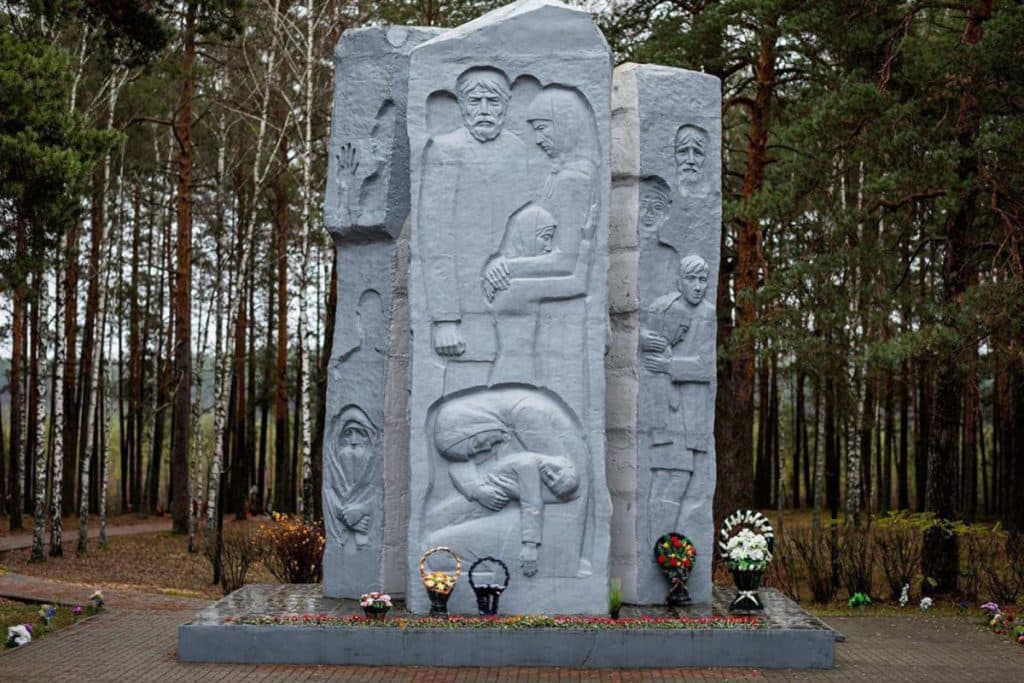Ozarichi. Memorial complex for death camp prisoners.
Memorial
Belarus, Gomel region, Kalinkovichi district, Ozarichi settlement.
Description
March 19, 2024 marked the 80th anniversary of the liberation of the prisoners of the Ozarichi death camp. The Ozarichi death camp differed from other camps established on the territory of Belarus in that it was the first place where bacteriological weapons (typhus) were used en masse.
On March 10, 1944, a fascist death camp was organized in a swampy place for residents of Gomel, Mogilev, Polesie regions of Belarus, Smolensk and Oryol regions of Russia. The concentration camp, which lasted only 10 days, claimed the lives of more than 20,000 civilians. The Ozarichi death camp was liberated on March 19, 1944 by the army of General Pavel Ivanovich Batov.
Categories
Historical
With children
Comments
Reviews to the Place
1Ольга Ерёменко
13.06.2025
Ozarichi is a place of universal pain and sorrow, a reminder to all of us of the price the Soviet people paid for the Great Victory during the Great Patriotic War.
Ozarichi was a complex of German concentration camps consisting of three camps (the villages of Dert, Ozarichi, Podosinnik). 50,000 Soviet citizens were held in the concentration camp. There were elderly people, disabled women, and children here. They were rounded up in a swampy area surrounded by barbed wire. People were trapped in a confined space without food, clean water, and were sick with typhus.
In the diary of the fascists, an entry was preserved: "... food will no longer be wasted on useless eaters, and the outbreak of infection will be reduced by isolating the sick." The concentration camp was located along the front line, and the people actually covered the German defenses in the areas most vulnerable to the Nazis for 15 km. There were no buildings on the territory of the concentration camp. He was threatened with execution for any kind of protest.
In 1965, a memorial complex designed by sculptor D. A. Popov was erected on the site of the Ozarichi death camp. There is a monument of three steles, on which the names of women, children and the elderly are carved. On June 26, 2004, the "Museum of Memory of Victims of the Ozarichi Death Camp" was opened in the village. It contains archival documents, materials, memoirs of prisoners, their photographs and personal belongings. Students of the Ozarichi regional gymnasium have organized a museum of local lore, which contains materials about the history of their relatives, prisoners of the "Ozarichi".
On March 19, 2014, a requiem rally was held in the village. It was dedicated to the memory of the dead prisoners and those who managed to survive. A film was made about the concentration camp. On December 9, 2023, the renovated Memorial Complex was opened after reconstruction.
A memorial tower, a wall of sorrow, epiphany stones, and a bas-relief to the medical soldiers who prevented the spread of the typhus epidemic have been installed on the site of the former death camp. There is an area for laying flowers and wreaths, panels with archival documents, photographs taken after the liberation of prisoners in March 1944. There is a parking near the chapel. There are religious Crosses along the edge of the swampy area. An observation deck has been created. Everything is done in the same style.
The new information pavilion has become the center of attraction for tourists. There is a story composition in the form of a panorama with wax figures and paintings. You can learn about the tragic pages of history through an interactive booth.
"Ozarichi" is a place of universal pain and sorrow, a reminder to all of us of the price the Soviet people paid for the Great Victory during the Great Patriotic War.




